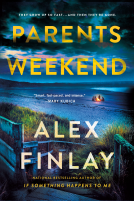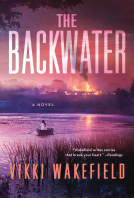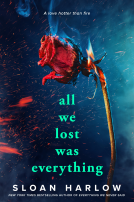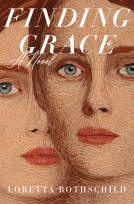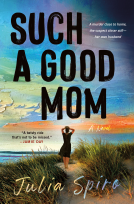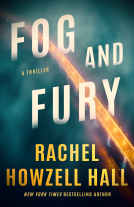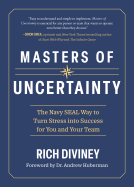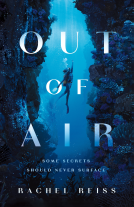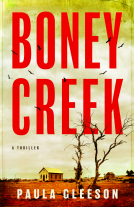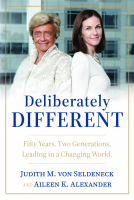
Look
A Practical Guide for Improving Your Observational Skills
by James H. Gilmore
This title was previously available on NetGalley and is now archived.
Send NetGalley books directly to your Kindle or Kindle app
1
To read on a Kindle or Kindle app, please add kindle@netgalley.com as an approved email address to receive files in your Amazon account. Click here for step-by-step instructions.
2
Also find your Kindle email address within your Amazon account, and enter it here.
Pub Date Aug 23 2016 | Archive Date Nov 21 2016
Greenleaf Book Group | Greenleaf Book Group Press
Description
Inspired by Edward de Bono’s Six Thinking Hats method, Jim Gilmore has created a unique and useful tool to help our ability to perceive. In his latest book, Look: A Practical Guide for Improving Your Observational Skills, Gilmore introduces the metaphor of “six looking glasses.” Each looking glass represents a particular skill to master in order to enhance the way we look at the world.
The six skills include binoculars, bifocals, magnifying glass, microscope, rose-colored glasses, and blindfold looking. Each looking glass provides an observational lens through which to see the world differently. This framework will help its users to:
• See the big picture
• Overcome personal bias
• Pinpoint significance
• Better scrutinize numerous details
• Uncover potential opportunities
• See what’s in the mind’s eye
These varying perspectives offer myriad practical applications: They can help any executive, manager, or designer more richly observe customer behavior, philanthropists and policy makers more keenly identify human needs, and anyone else interested in innovative thinking to first ground their ideation in practical observation.
Gilmore helps readers grasp the Six Looking Glasses by including helpful everyday examples and practice exercises throughout. Put into practice, this method of looking will help you see the world with new eyes.
Advance Praise
“Jim Gilmore teaches us that something as seemingly simple as looking can be crucial for success in any field. So get this book—and learn to look with whole new eyes.”
—Daniel H. Pink, Author of Drive and A Whole New Mind
“This book should be required reading in every design class and by every design team.”
—Mark Greiner, Senior Vice President, Business Concept Design & Chief Experience Officer at Steelcase Inc.
“Gilmore’s Six Looking Glasses provide a powerfully simple tool for helping travelers to see the world more richly. Pack them in your suitcase and enjoy the view with fresh eyes!”
—Chip Conley, Head of Global Hospitality & Strategy at Airbnb
“After reading Jim Gilmore’s new book, you will never look at the world—including healthcare—in the same way again.”
—Rolf Benirschke, Chief Patient Officer of Legacy Health Strategies
“Gilmore’s The Experience Economy brilliantly anticipated a new economy based not on goods and services but on memorable experiences. This time around, he brings his unique perspective to the much-ignored power of observational skills. Take a good look at Look.”
—Lee Knight, Founder & CEO of Exhibitor Media Group
“Once again, Jim Gilmore challenges organizations to find unique ways to drive innovation. The power of observation has long been extolled but rarely emphasized in business. Jim’s latest work will make all of us view our businesses through different lenses—and literally open our eyes.”
—David Peckinpaugh, President of Maritz Global Events
“Our culture is increasingly distracted. With eyes glued to screens, we are often oblivious to the people beside us and the places we inhabit. The ancient rebuke of God could certainly apply to our generation, ‘You have eyes but you do not see.’ Our failure to recognize the world around us is especially dangerous for those seeking innovative ideas because, as Gilmore reminds us, what we see determines what we think and do. Seeing differently is one of Gilmore’s specialties. He is one of the most gifted observers I know. Five minutes with him will convince you that ordinary objects and processes are overflowing with untapped potential—from airline seats to food preparation—if we could just learn to see them with new eyes. In Look he shares his simple but profound observational methods using Six Looking Glasses. Once you see the world with this tool, you won’t see it, or your work, the same way again.”
—Skye Jethani, Author of With and Futureville and Co-host of The Phil Vischer Podcast
Marketing Plan
National trade marketing and sales campaign
Online marketing campaign including trade advertising and advance giveaways via GoodReads
Advance distribution of digital ARC via NetGalley to reviews, bloggers, journalists, librarians, booksellers, and media
Available Editions
| EDITION | Other Format |
| ISBN | 9781626342996 |
| PRICE | $17.95 (USD) |
Links
Featured Reviews
 Reviewer 238609
Reviewer 238609
Look: A Practical Guide for Improving Your Observational Skills by James H. Gilmore shows us how to truly observe the world around us rather than always having our eyes on a screen, be it cellphone, tablet, or otherwise.
We are shown how to honestly look at ourselves and also that which is around us. We are shown how learning to truly look opens up new ways of seeing and creativity. This book will help us be more creative and open to more ideas. We will see things in a new light and be filled with fresh imaginings, all by learning to truly see the world around us and in front of us.
Overall, I think everyone could use this book, as well most of us are attached to one screen or another. Just the other day I was at the library with my son and a librarian came over and said, “it’s so refreshing to see someone not attached to their phone and really spending time with their children.” I think that says a lot about our society today and how this book could help everyone. This is a wonderful book.
 Mukesh G, Reviewer
Mukesh G, Reviewer
I teach design thinking and consider myself to be a good observer of stuff. However, after reading this book by James Gilmore, I now have an arsenal of tools that I can use to significantly improve how I view things, or how I look..
The link to the six hats of thinking by de Bono made it even more easier to remember. The use of the different metaphors for each of the method of looking and clear examples make this book, not only a good read, but also a workbook, that I will come back to again and again, whenever I am struggling for insights.
 Dr. Cassandra H, Educator
Dr. Cassandra H, Educator
Look: A Practical Guide for Improving Your Observational Skills by James H. Gilmore focused on being more aware using a fresh outlook on observation. Gilmore was inspired by Edward de Bono’s Six Thinking Hats Method to create a metaphor known as the Six Looking Glasses. Binoculars, bifocals, magnifying glass, microscope, rose-colored glasses, and blindfold looking are the six skills that Gilmore provides intense instruction.
I enjoyed Gilmore’s ability to explain each skill thoroughly. Additionally, he provided examples and exercises to ensure mastery of each skill. The text lacks variety and becomes somewhat repetitive. Once, I reached the microscope skill the book became dull. Honestly, this book reads more like a textbook than a book for leisure.
The practicality of the book is immense. If you can trample through the dullness, it is jammed pack with information that can enhance your observational skills. I would suggest reading the book at a minimum of two times and not in one sitting.
Each skill must be read individually, digested, practiced, and implemented to grasp Gilmore's perspective on observation fully. I would recommend this book for people, who are looking for innovative methods to be more aware of their surroundings. Look: A Practical Guide for Improving Your Observational Skills by James H. Gilmore focused on being more aware using a fresh outlook on observation. Gilmore was inspired by Edward de Bono’s Six Thinking Hats Method to create a metaphor known as the Six Looking Glasses. Binoculars, bifocals, magnifying glass, microscope, rose-colored glasses, and blindfold looking are the six skills that Gilmore provides intense instruction.
I enjoyed Gilmore’s ability to explain each skill thoroughly. Additionally, he provided examples and exercises to ensure mastery of each skill. The text lacks variety and becomes somewhat repetitive. Once, I reached the microscope skill the book became dull. Honestly, this book reads more like a textbook than a book for leisure.
The practicality of the book is immense. If you can trample through the dullness, it is jammed pack with information that can enhance your observational skills. I would suggest reading the book at a minimum of two times and not in one sitting.
Each skill must be read individually, digested, practiced, and implemented to grasp Gilmore's perspective on observation fully. I would recommend this book for people, who are looking for innovative methods to be more aware of their surroundings.
This book is filled to the brink with eye-deas!
It was an informational, scholarly sort of book, so it took me a while to get through. As a research student, there's only so much 'schoolish' books you can take. Though, I certainly felt the nature of this book was compelling: James Gilmore looks into how we can maximise the use of our eyes, to make more useful observations, and to influence our thoughts.
It is clear that I am favourable towards this book, for example, Gilmore's insights are widely supported: early into the book, Gilmore writes of how 'what you look at informs what you think about, which influences what you act upon.' This is something researchers have found a number of times, tackling the issues which come with blank, and boring, office walls. In spite of this, I do have slight criticisms. I found that Gilmore solely focuses on ways of looking, and so I do understand why he didn't venture into outside territories (just as Dr. Bono didn't, in the case of his 'thinking' hats), but I feel that our imagination, our mind's eye comes into play considerably with both thinking and looking, the same can be said of colour. Certain colours stimulate our attention, influencing our behaviours, more than others. Gilmore could have made use of this.
I also felt that this book isolates people who are blind or partially sighted. While Gilmore does take this population into consideration, as he writes 'Looking can take place with more than your eyes. True, we normally associate looking with just the eyes, because we do most all looking through our sight. But a skilled observer also looks via each of the other senses,' I felt there was potential for him to have been able to integrate a pair of glasses to suit and explain the ways our senses could help, as some of us happen to rely on different senses to other people.
Though, the surprising, and most definitely the best thing about this book is that you can use it is various parts of your life: your personal and professional life. For example, as a historian, and someone with an interest in Psychology, looking at the nature of things is incredibly important. You are required to investigate by adapting a holistic approach (as unscientific as that may be, for Psychology). You have to see all things, see how they interact, how they fit a framework a 'mould', and how they influence events. You have to be quite scrupulous, constructing various motives, and putting everything into perspective, in order to evaluate significance. There is hardly any certainty, neither History nor Psychology is a Science: so you just explore, no limits. This is where the usefulness of this book comes in: Gilmore encourages readers to mindfully explore, looking this way and that, zooming into the picture and then looking backwards (something required of any historian). To explore what is there, and what is not. Some of the looking glasses weren't as useful for me, for example the rose- coloured glasses. As a historian, I am not required to see how things could work better. As I would mindlessly reach new heights, to the point my arguments and judgements would become unfocussed, and unfounded: you can hardly find cause for things that never happened! No evidence means no substantiated argument, which practically makes the argument empty and pointless. But even these rose coloured glasses, particularly in the discipline of Psychology, could help us evaluate better treatments, better methodology for a study, better techniques to reach a result. Allowing for conclusive, more reliable, and valid evidence.
I realise that some of these things are things we do anyway, as 'part of the job', just some skills we've unconsciously picked up, and learnt when to utilize...But, in spite of this I feel that Gilmore's 'Looking Glasses' help put a name to the skills, and so when our observations, findings or debates come up short, we can look down a different avenue, by changing how we look. We can count down the ways we've already looked, and look a different way. As someone who can get carried away with facts, and create new arguments that do not answer a key debate question, I rarely ask myself, "How could I miss that?" Instead, I ask myself: "Why in the world would I add that?" Stuff that doesn't answer the question, nor does it contribute to the debate; so by using these glasses I can ensure I only look at something that is significant, so as to avoid creating my own debate and spiralling out of control with my arguments. Needless to say, this book is brilliant, and incredibly handy: one, I will happily revisit and consult when writing essays.
These glasses have immense potential. They allow us to make some profound observations, I felt like I was Sherlock for a while. Speaking of, this book could be very valuable out in the exciting field of detective work! I also really liked the Dr. Suess style at the beginning of the book, he's quite possibly still my favourite children's author.
I received this book through NetGalley.
 Cait H, Reviewer
Cait H, Reviewer
I found this book amazing. This concept is not a new one but it is one that is commonly overlooked. I am certain this will become a book of many discussions and many college reading assignments as we move further into the benefits of a mindfullness society. This book is simple to understand and can change our ways in a direction that will create a more fullfilling life.
Thank You NetGallery for the advanced copy of this life changing book in exchange for my honest opinion.
Readers who liked this book also liked:
Michael White and Tom Corcoran
Christian, Religion & Spirituality
